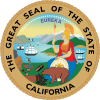| Act for the Government and Protection of Indians | |
|---|---|
 | |
| California State Legislature | |
| Full name | Act for the Government and Protection of Indians |
| Assembly voted | April 19, 1850 |
| Signed into law | April 22, 1850 |
| Sponsor(s) | Chamberlin, Bidwell |
| Code | California Statutes, 1850 |
| Section | Chapter 133 |
| Website | [1][2] |
Status: Repealed | |
| California law |
|---|
 |
| Constitution |
| Codes |
| Note: There are 29 California codes. |
| Courts of record |
| Areas |
The Act for the Government and Protection of Indians (Chapter 133, Cal. Stats., April 22, 1850), nicknamed the Indian Indenture Act was enacted by the first session of the California State Legislature and signed into law by the 1st Governor of California, Peter Hardeman Burnett.[1][2] The legislation led to the forced labor of many Native Americans in California, in addition to regulating employment terms and redefining criminal activity and punishment.[3] The legislation played a crucial role in enabling the California genocide, in which thousands of Native Californians were killed or enslaved by white settlers during the California gold rush.[4]
Burnett, who signed the bill into law, explained in 1851 "[t]hat a war of extermination will continue to be waged between the races until the Indian race becomes extinct must be expected".[5] At the time of the legislation's passage, Native Californians were ineligible to become citizens, vote, or testify in court.[6] The act facilitated the removal and displacement of Native Californians Indians from their traditional lands, separating at least a generation of children and adults from their families, languages, and cultures from 1850 to 1865.
Due to the nature of California court records, it is difficult to estimate of the number of Native Americans enslaved as a result of the legislation. During the time period between 1850 and 1870 in which the legislation was in effect, the Native Californian population of Los Angeles decreased from 3,693 to 219 people. Although the California legislature repealed parts of the statute after the Thirteenth Amendment to the United States Constitution abolished involuntary servitude in 1865,[2] it was not repealed in its entirety until 1937.[7] In 2019, Governor Gavin Newsom apologized on behalf of the state of California for the legislation.[8]
- ^ Laws of the State of California, Chapter 133 (extract). Sacramento, CS: State of California. 1850. pp. 408–410.
- ^ a b Dutschke, Dwight (2014). "A History of American Indians in California" (PDF). California Office of Historic Preservation, Five Views: An Ethnic Historic Site Survey for California. Archived from the original (PDF) on January 1, 2015. Retrieved October 10, 2016.
- ^ "Act for the Government and Protection of Indians | American Experience | PBS". www.pbs.org. Retrieved October 30, 2020.
- ^ Madley, Benjamin (2016). An American Genocide: the United States and the California Indian catastrophe, 1846–1873. New Haven London: Yale University Press. pp. 11, 158, 351. ISBN 978-0-300-18136-4.
- ^ "Peter Burnett – State of the State Address". California State Library. Retrieved September 22, 2024.
- ^ Wee | @ewee, Dogmo Studios | Eliza (June 28, 2018). "Native American Slave Market – Gold Chains: The Hidden History of Slavery in California | ACLU NorCal". ACLU of Northern CA. Retrieved October 30, 2020.
- ^ Johnston-Dodds, Kimberly. "Early California Laws and Policies Related to California Indians" (PDF). 50 California Research Bureau, California State Library. Archived from the original (PDF) on October 12, 2014. Retrieved October 10, 2016.
- ^ "Governor Newsom Issues Apology to Native Americans for State's Historical Wrongdoings, Establishes Truth and Healing Council". California Governor. June 18, 2019. Retrieved June 24, 2021.
